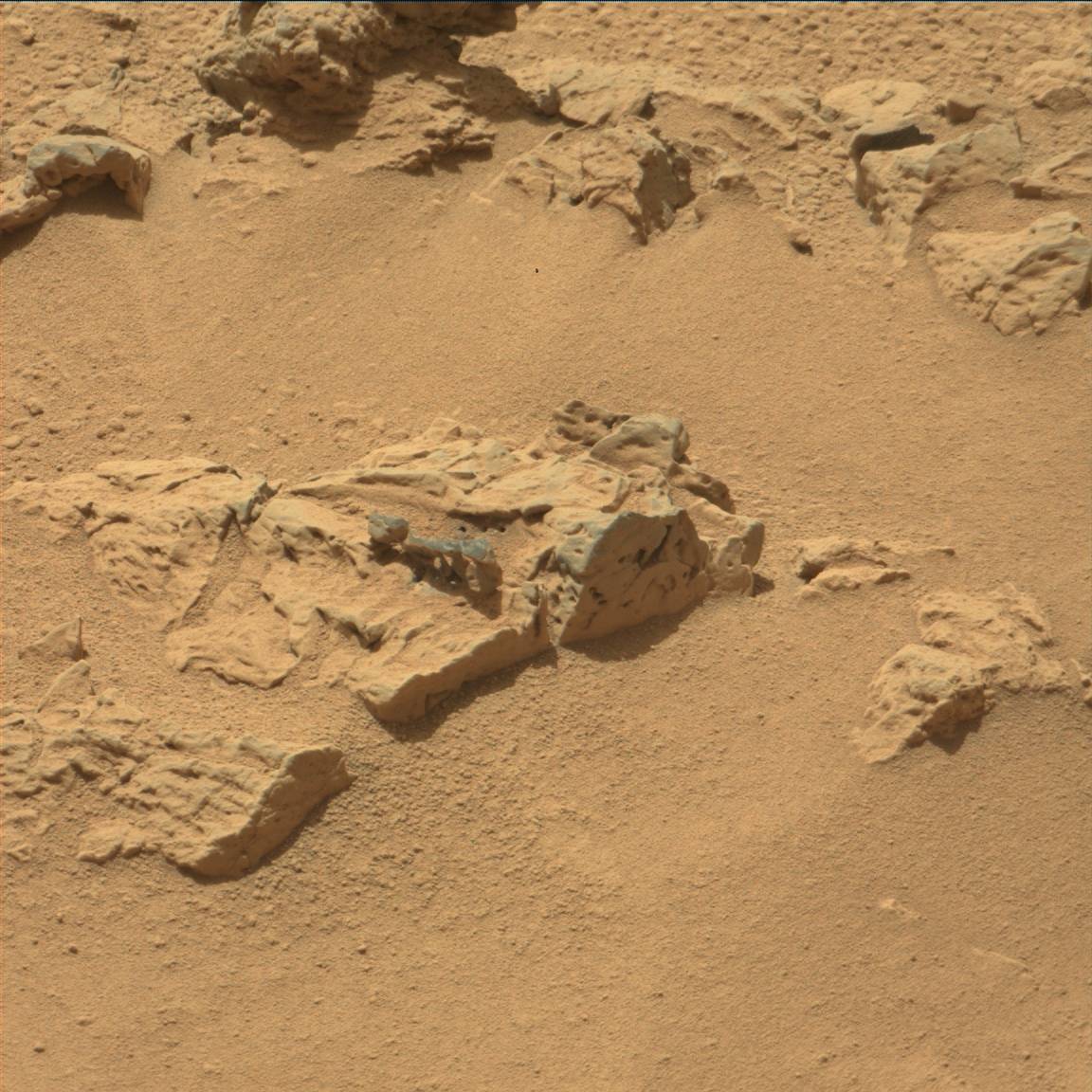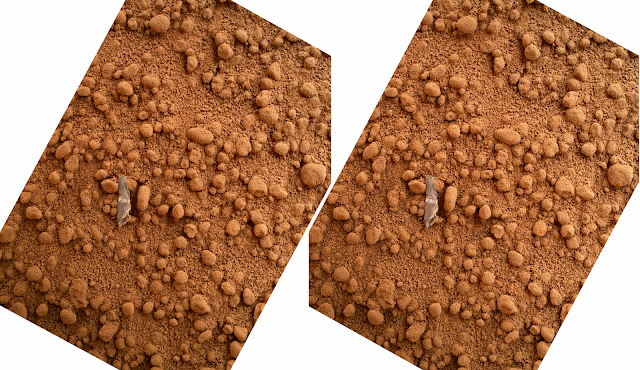An extraordinary rock formation, photographed with a Curiosity mast camera a few days ago, recieved and released today.
[10/26/12: See update at bottom, from a JPL video that gives a better but incomplete description of what they know about this feature they call "Zephyr" or "Stonehenge".]
It appears to be a row of harder bluish rock blobs with the underlying substrate rock partially eroded away. Is it a
ventrifact? Presumably most erosion is due to wind driven abrasion. These pillars are vertical and sandblasting would be expected to undercut harder material, but it's strange that the pillars survived. The bluish caps have a slightly specular surface, and look like they may be translucent with a distinct lower boundary and opaque supporting rock.
The three dark "holes" in the sand behind the pillars are remains after Curiosity laser blasting.
 |
| blue capped pillars |
There doesn't appear to be any sort of continuation of the form, as you might see in an eroded dyke.
I'm guessing they are agate:
Most agates occur as nodules in volcanic rocks or ancient lavas where they represent cavities originally produced by the disengagement ofvolatiles in the molten mass which were then filled, wholly or partially, by siliceous matter deposited in regular layers upon the walls.
In the formation of an ordinary agate, it is probable that waters containing silica in solution—derived, perhaps, from the decomposition of some of the silicates in the lava itself—percolated through the rock and deposited a siliceous coating on the interior of the vapour-vesicles.
Original image
8/23/12
JPL is on it. Here's a
ChemCam photo. Notice that the three "holes" (and a fourth, less visible) in the sand behind the formation don't appear in this shot (see below for comparison after shot), but the shadows are in a similar position (a slightly higher sun angle). A close-up photo is needed, if only for the beauty and mystery.
Original image,
taken: 2012 OCT 17 20:45:59 EDT
Original image,
taken: 2012 OCT 17 21:03:22 EDT, 17 minutes and 22 seconds after the above image. There are also disturbances below the pillars, near the shadow line.
Drat, it missed!! More target practice required, autonomous mode. Don't these robot overlords practice with shoot-em-ups?
I count six misses, including a couple at the base of the pillars, and some pebbles scattered.
1/23/12 New photo that's more in focus showing that Curiosity had a direct hit, although it is close to the boundary between the blue cap rock and substrate.
Original image, taken: 2012 OCT 23 00:37:01 EDT
Here's the comparison, coregisteed to the single "before" image.
No word yet from JPL on whether they saw a silica signal to be expected from an agate.
From 10/26/12 JPL podcast and YouTube video:
This feature is really only an inch long and we're shooting this from about 8 feet away, making the pointing very difficult. So that's why we decided to do 9 points instead of just 2, just to make sure we would hit the material of interest. We ended up hitting both the dark and the light material and we found that there was indeed a compositional difference.
 |
| 1" scale bar |
This feature is really only an inch long and we're shooting this from about 8 feet away, making the pointing very difficult.
 |
| JPL marking of laser hits |
You can see that this isn't a good representation of where the laser actually hit: two or three of them are just wrong. It's irritating that JPL hasn't released data or results of the spectroscopy.






















